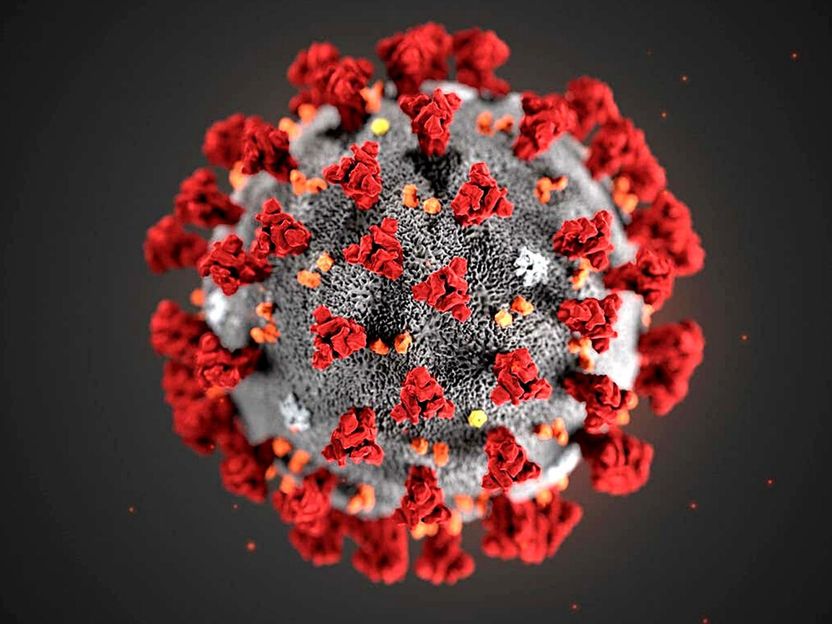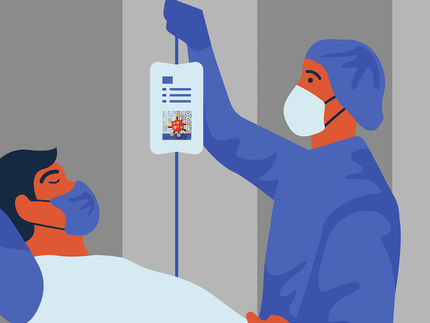How SARS-CoV-2 takes over the cell's protein factory
“We've discovered three possible approaches to antiviral treatments”
Advertisement
The question of how the Covid virus takes over host cells and suppresses the body's defences has been the subject of much debate. Now a research team led by Marina Chekulaeva at the MDC has pinpointed the crucial mechanism involved.

Symbolic image
pixabay.com
It's over two years since the outbreak of the coronavirus SARS-CoV-2. So far, the main tool at our disposal to keep the virus in check and prevent its spread has been vaccines. However, the currently available vaccines are unable to completely stop transmission of the virus. It is also likely that future virus variants will mutate in a way that enables them to evade the immunity that vaccines provide. This makes it extremely important to gain a better understanding of the virus and the mechanisms by which it infects cells, makes its own protein molecules and produces new viral particles. With this knowledge, we can find new approaches to treating a SARS-CoV-2 infection.
A research team led by Dr Marina Chekulaeva at the Berlin Institute for Medical Systems Biology (BIMSB), part of the Max Delbrück Center for Molecular Medicine in the Helmholtz Association (MDC), working with colleagues at the Leibniz-Institut für Analytische Wissenschaften in Dortmund, has discovered how the virus takes over the cell's protein factory to synthesize viral proteins while preventing the production of host proteins, disrupting the host cell’s immune response. The researchers have published their findings in the journal “RNA”.
NSP1 suppresses protein production in the cell
Researchers have had a viral protein known as NSP1 in their sights for a long time. This is the first viral protein to be produced following infection of the host cell. “NSP1 suppresses protein production in the cell without impairing the synthesis of viral proteins,” says Marina Chekulaeva. “Until now, there had been very contradictory hypotheses about how this worked. We decided to explore this mechanism with Lucija Buinic, the first author of the manuscript who joined the lab during the lockdown to do her Master thesis.”
Marina Chekulaeva and her team have now successfully unravelled this process. Scientists already knew that the NSP1 protein binds to the ribosomes which serve as the cell’s protein factories. To be more precise, it anchors itself in the tunnel through which the messenger RNA (mRNA) enters the ribosome to allow the protein-making instructions to be read and then translated into proteins. This has the effect of blocking the ribosome to an extent that cellular mRNAs can no longer enter the protein factory and the cell cannot synthesize important cellular protein molecules. This in turn suppresses the immune response.
Stem loop serves as entry ticket
However, viral mRNAs also need access to the protein factories so that new viral particles can be produced. So how do they get around the blockade the virus has created? Marina Chekulaeva and her team have discovered that particular nucleotides in a special structure in viral mRNA, known as a hairpin or stem loop, are involved. This hairpin seems to function as a kind of entry ticket: it interacts with NSP1, which permits access into the ribosome, allowing the viral protein to be synthesized.
“This means that we've discovered three possible approaches to antiviral treatments,” says Chekulaeva. One possibility would be to target the NSP1 protein itself to prevent it from interacting with the ribosome. Alternatively, the interaction between the NSP1 protein and the viral mRNA could be suppressed. For example, the point at which NSP1 interacts with the stem loop could be blocked.
Another conceivable approach would be to specifically eliminate the viral mRNA. With this in mind, Chekulaeva and her team have produced oligonucleotides that have been chemically modified to stabilise them. These bind to the stem loop, creating an RNA-DNA hybrid that is eliminated by the cell. Since this stem loop is specific for viral mRNA, this intervention is very specific – it does not affect the cellular mRNA, and therefore does not impair protein synthesis in the infected cell. “It’s also a very important structure, which we can assume with a fair degree of confidence undergoes very little mutation,” says Chekulaeva. “So it's unlikely that any resistance would develop.”
All three possibilities are potentially promising – at least in experiments in the petri dish. More research is needed to establish which of them offers the greatest potential for effective treatments.

























































